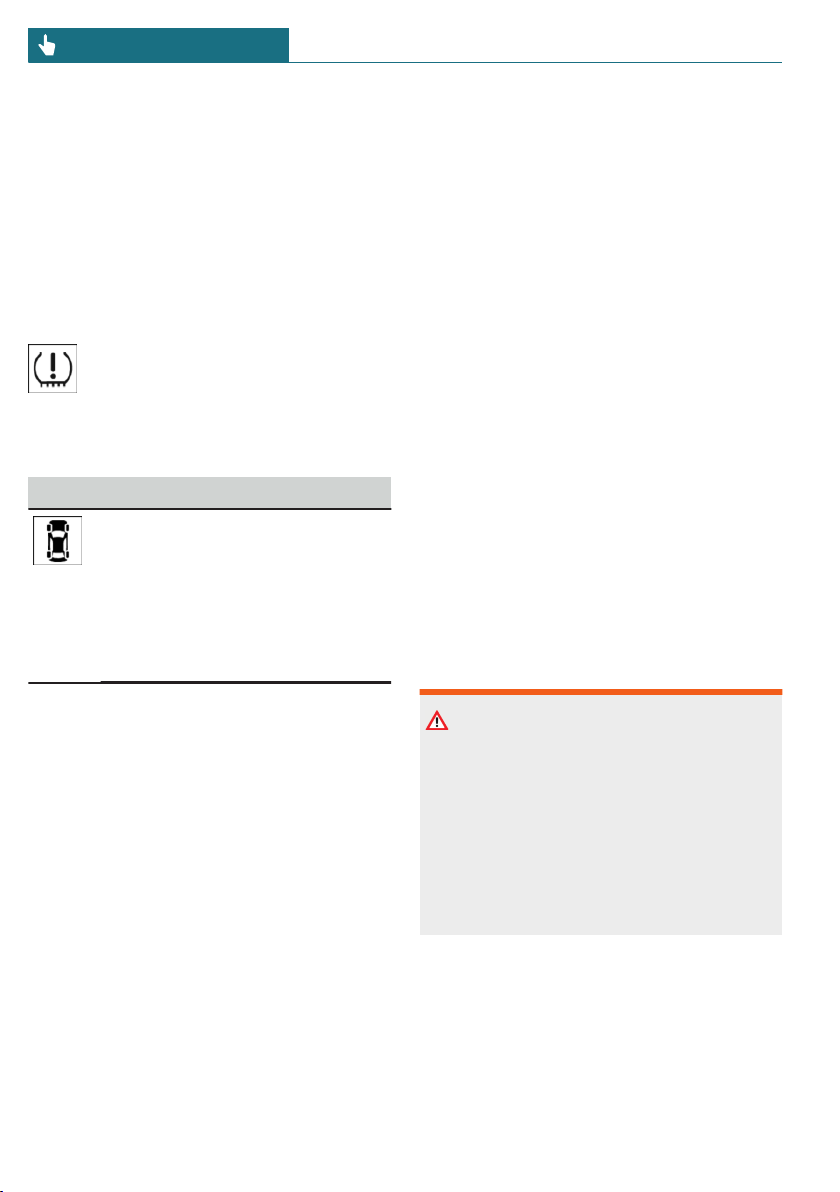Loading ...
Loading ...
Loading ...

2. At the next opportunity, for instance gas
station, check and correct the tire infla-
tion pressure in all four tires, if neces-
sary.
3. Reset the system.
If there is a significant loss of tire
inflation pressure
Message
A yellow warning light is illuminated
in the instrument cluster.
In addition, a symbol with the affected tire
appears in a Check Control message on the
Control Display.
Symbol Possible cause
There is a flat tire or a major
loss in tire inflation pressure.
No reset was performed for the
system. The system issues a
warning based on the tire infla-
tion pressures stored during the
last reset.
Measure
1. Reduce your speed and stop cautiously.
Avoid sudden braking and steering ma-
neuvers.
2. Check whether the vehicle is fitted with
normal tires or run-flat tires.
Run-flat tires, refer to page 269, are la-
beled with a circular symbol containing
the letters RSC marked on the tire's
sidewall.
Actions in the event of a flat tire
Normal tires
1. Identify the damaged tire.
To do this, check the tire inflation pres-
sure in all four tires, for instance using
the tire pressure gage of a flat tire kit.
If the tire inflation pressure in all four
tires is correct, the Tire Pressure Moni-
tor may not have been reset. In this
case, perform the reset.
If the tire inflation pressure in all four
tires is correct, the Flat Tire Monitor
may not have been initialized. In this
case, initialize the system.
If identification of flat tire damage is
not possible, please contact a dealer’s
service center or another qualified serv-
ice center or repair shop.
2. Repair the flat tire, e.g., with a flat tire
kit or by changing the wheel.
Use of sealant, for instance from the flat tire
kit, may damage the TPM wheel electronics.
In this case, have the electronics checked
and replaced at the next opportunity.
Run-flat tires
Safety information
Warning
Your vehicle handles differently with a
run-flat tire with no or low inflation pres-
sure; for instance, your lane stability when
braking is reduced, braking distances are
longer and the self-steering properties will
change. There is a risk of accident. Drive
moderately and do not exceed a speed of
50 mph/80 km/h.
Maximum speed
You may continue driving with a damaged
tire at speeds up to 50 mph/80 km/h.
Seite 148
CONTROLS Safety
148
Online Edition for Part no. 01402667273 - VI/19
Loading ...
Loading ...
Loading ...